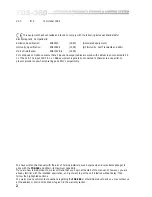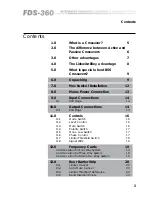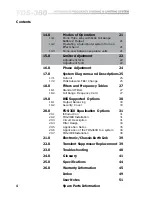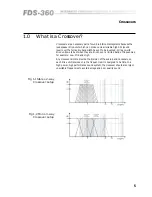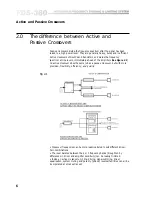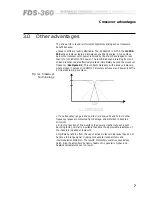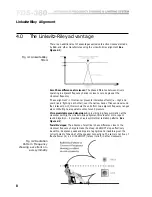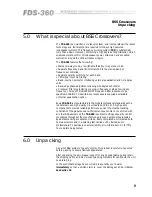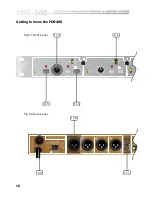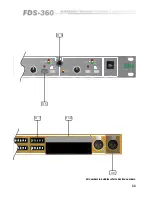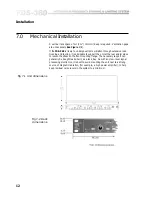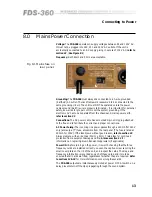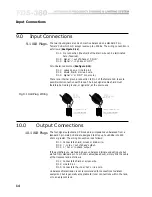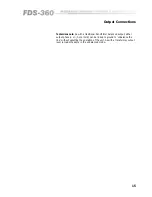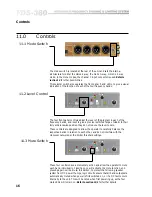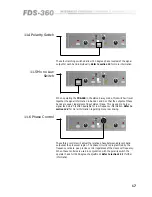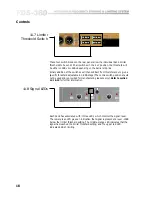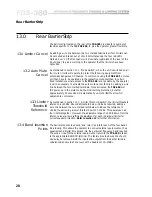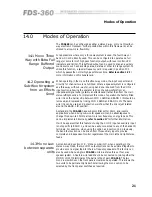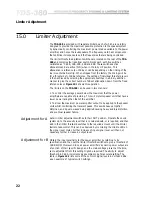
7
Crossover advantages
3.0
Other advantages
The drive-units in sound reinforcement systems utilising active crossovers
benefit because:
• Steep rolloffs are readily attainable. The -24dB/OCT rolloff in the BSS
FDS-
360
active crossover rapidly discharges out-of-band energy.
At one octave
below the crossover point power received by the driver has dropped to less
than
½
% (or 1/200th) of full power
. The result: Bad sound resulting from out-
of-band resonances are effectively masked immediately beyond the crossover
frequency (
See Figure 3.1
). This contrasts markedly with passive crossovers,
where slopes in excess of -12dB/OCT are rarely achieved, and power rolloff is
4 times less rapid, per octave.
Fig 3.1 Crossover
Terminology
• If one frequency range is driven into clip, drive-units and horns in other
frequency ranges are protected from damage, and distortion is kept to a
minimum.
• Direct connection of drive-units to the power amplifier cuts out loss of
damping factor, normally inevitable thanks to the appreciable resistance of
the inductors in passive crossovers.
Amplifiers benefit too from the use of active crossovers. Because they do not
handle a full-range signal, clipping produces far less harmonic and
intermodulation distortion. The results: Momentary overdrive sounds less
harsh. Also the amplifiers' dynamic headroom is generally higher, and
heatsink temperatures can run lower.
Summary of Contents for FDS 360
Page 1: ...1 FDS 360 User Manual...
Page 51: ...51 User Notes...
Page 52: ...52 User Notes...
Page 53: ...53...
Page 54: ...54 User Notes...


